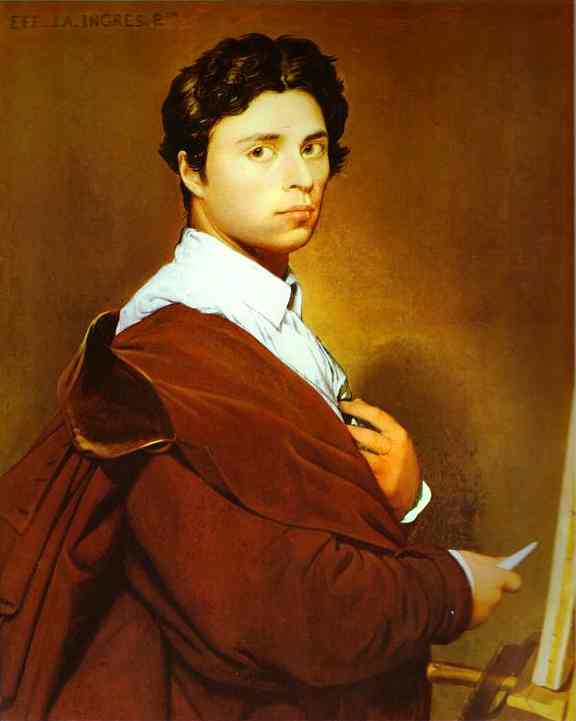The directory «Artists»
Ingres Jean-August-Dominique
(1780—1867)

Jean-August-Dominique Ingres is a French neo-classical painter, and one of the major portrait painters of the 19th century. He received his first lessons in art and music from his father, Joseph Ingres (1755-1814), miniature-artist and sculptor. In 1791, he entered the Royal Academy of Arts in Toulouse, where his teachers were J. Vigan and G. Roques. Simultaneously he took violin lessons, and played in the local orchestra. After 1797, Ingres was in Paris, in the studio of David. He resolutely studied principles of composition and human anatomy. In 1801, he got a Roman prize for his picture Ambassadors of Agamemnon and could go to Italy to continue his education. Because of financial problems he stayed in Paris till 1806; during the period he executed a number of bright and expressive portraits; Portrait of Napoléon on the Imperial Throne, Self-Portrait, Portrait of Mademoiselle Rivière. The model on every painting is portrayed on a large scale, and takes all the space of the canvas. Ingres was reproached for imitation of Gothic masters and Jan van Eyck.
From 1806 till 1824, the painter lived in Italy, first in Rome (1806-1820), then for four years in Florence; he worked and studied the art of Renaissance; Raphael was his idol. His fame as a portraitist grew; his commissions increased. In 1807-24, he painted a lot of portraits. In 1813, Ingres married Mlle Madeleine Chapelle (died in 1849), a modest milliner from Guéret, see her portrait Madame Ingres. In 1813-14, in Rome he painted his popular La Grande Odalisque. The picture was commissioned by the Queen of Naples, Napoleon»s sister, but never delivered, since the Emperor»s fall intervened. Ingres remained in Rome but sent the picture to the Paris Salon in 1819.
In 1824, Ingres returned to Paris and showed Vow of Louis XIII (Montauban, Cathedral) in the Salon. This canvas brought him official recognition and fame: he was elected in the Academy, and awarded the Order of Honor. His very long stay in Italy and fondness of the Renaissance made him miss out on the formation of Romantic painting in France. On his return he could not understand Romanticism and became its violent opponent. From now on Ingres was looked upon as a foothold and the hope of classicism. In 1835, he returned to Italy as Director of the French Academy of Arts in Rome (1835-1841). At the end of his directorship, he came back to France. In Paris a great welcoming parade was held in his honor. The king himself invited Ingres to the Versailles.
Though the big canvases Apotheosis of Homer (1827), Martyrdom of St. Symphorien (1834) and others are grandiose, and make impression with their sizes and labor of the painter, they can»t be considered the achievements of the artist, they are cold and rational. Working on such grand compositions with mythological and religious subjects, the master was irritated when he had to distract for portraits, but exactly the portraits made his name. The main force of Ingres was in his contact with a model, his sitters always inspired the master. The outstanding work is the Portrait of Louis-Francois Bertin.
But the summit of Ingres» achievement was his women portraits. The artist perfectly expressed the cult of the ideal woman, as the 19th century saw her: woman as an item of art, who commanded the art of communication, art of movements, art of being dressed in accordance with place, time and her natural data.. The secret of the charm of Ingres» portraits is in his love to every model.
He was in love with women all his life. In 1852, he married Delphine Ramel, aged 20, at his own age 61. He remained like this till the end – one cold winter day he accompanied a young beautiful modle to a carriage, as a gallant man he stayed bareheaded. He caught a cold, which developed into pneumonia, he did not recover – he was 87 years old.
Guinea, 2007, Portrait of Count N. D. Guriev